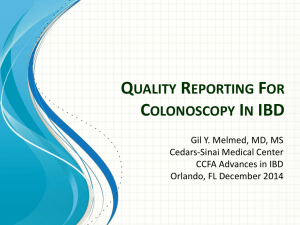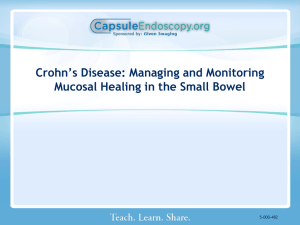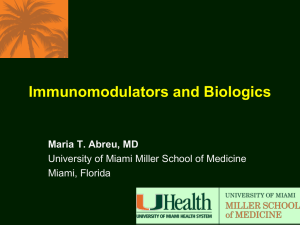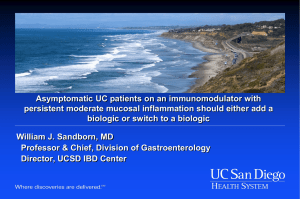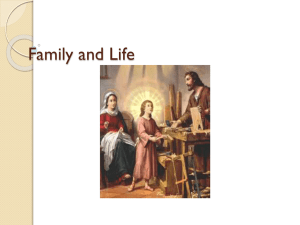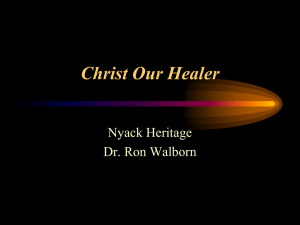PPT - Cochin GUT Club
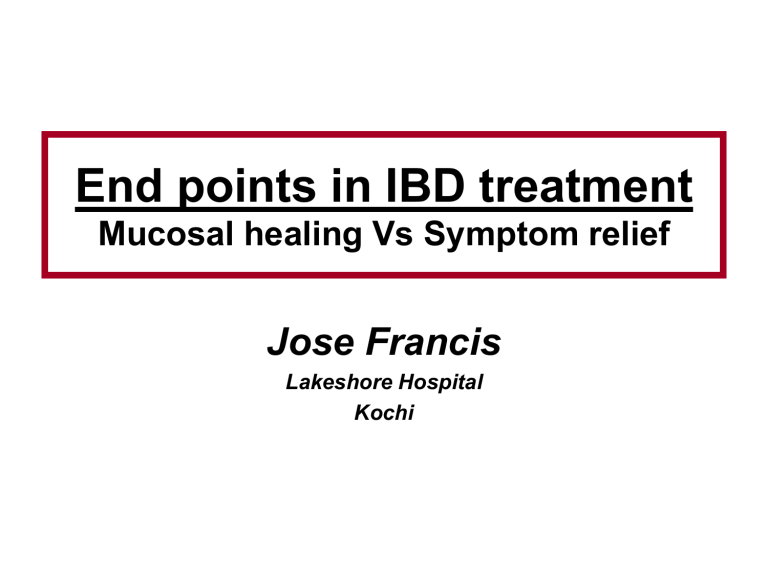
End points in IBD treatment
Mucosal healing Vs Symptom relief
Jose Francis
Lakeshore Hospital
Kochi
Introduction
• No cure for IBD
No end points available!!
Treatment goals
* SYMPTOM RELIEF
* Maintenance of remission
* Maintenance of QOL
Additional goals!!
* Disease modification
* Mucosal healing
* Pharmacoeconomics
* Disease prevention!
New therapeutic goals in IBD
Clinical
Induction & maintenance of remission off steroids
Closure of fistulas
Bowel
Mucosal & maintenance of healing
Healing of fistula tracks
Long term
Avoidance of complications, hospitalizations, surgeries & mortality
Definition - mucosal healing
• Clinician will say “I know it when I see it”
* Intact bowel mucosa
• Clinical trials - secondary endpoint
• Remember!!
Normal mucosa when biopsied
* Granulomas (ileum/colon)
* Focal enhancing gastritis (antrum)
* Lymphocytic infiltration (rectum)
Key question
• Does healing of mucosa
* Improves the outcome?
• Unfortunately treatments that heal
* Do not cure
• When one stops Rx, the disease will recur
Not uncommon situation
• Patient feels fine
– Physicians say “you’re better now, let’s just keep doing what we’re doing”
• Colonoscopy – activity
• Physicians do not say
“The fact that you are better now and we’ve achieved this level of mucosal healing through therapy escalation likely means that you’ll be in better shape in 10 years’’
Clinical endpoints- Assessment
• CDAI ( Remission <150)
• CAI
• Difficulty in evaluation
- Assess symptom relief only
- Non specific & non sensitive
- Inconsistencies in the way symptoms are reported, collected and understood, and symptom-based indices are limited when it comes to predicting how patients will fare
• (CDAI)
- Disease-focused, but not disease specific
- Symptom-based index has little to no prognostic value
Surrogates for Mucosal Healing
• ESR
• CRP
• Calprotectin
• Lactoferrin
• Imaging (MRE, CT,USG)
• Endoscopy – MAYO, CDEI
• Histopathology
Difficulty in evaluation
- Invasive tests
- the incidence of procedures & cost
- Compliance (when pt. is feeling fine)
- No standardization
What’s Wrong with Using Clinical
Endpoints Rather Than Mucosal Healing?
• Crohn’s disease
* No correlation with endoscopic findings
* Patients treated to clinical endpoints
- Have progression of disease
• Ulcerative colitis
* Complete clinical remission & mucosal healing (score of 0) - good prognosis
* No escalation for mild residual symptoms
Mucosal healing as a surrogate for longer term outcomes
• Associated with
* Better quality of life
* Fewer hospitalizations
* Fewer surgeries
* Longer time to clinical relapse
* Reduction in dysplasia/cancer
Why is mucosal healing an important treatment endpoint?
• Mucosal healing
- Measure of the underlying inflammation
• Clinical symptoms
- Secondary surrogate
• Clinical symptoms are important, but treating the underlying inflammatory condition is likely the more critical factor
To attain mucosal healing
• Escalating dose
• Adequate & Maintenance dose
• Switching over
• Combination
• Efficacy of anti-TNF drug are trough levels
• Adherence to treatment
Escalating dose
• 3 weeks, mucosal healing
– 65% with moderately active UC (4.8 g/d)
– 58% of patients 2.4 g/d ( P =.219)
• After 6 weeks, mucosal healing
– 80% compared with 68%( P =.012)
Am J Gastroenterol. 2005;100:2478-2485
Aliment Pharmacol Ther. 2005;21:133-140.
Can J Gastroenterol. 2007;21:827-834.
Clin Gastroenterol Hepatol. 2007;5:95-102
Aliment Pharmacol Ther. 2011;33:672-678
Infliximab Dose
• Dose escalation
- Decrease of the interval between infusions
- Dose increase to 10 mg/kg
• ACCENT I study
- 90% who lose response can be rescued
• ACCENT II study
- Fistulizing disease
- Successful in 60%
Adequate dose
• ASA
• Steroids
• Azathiopurine
• Biologic agents
Maintenance dose
5-ASA switching
• Few studies
• Granulated mesalamine 1.5 g once daily or placebo
• Maintained remission after 6 months of treatment
78% vs 59%; P<.001
• Relapse-free at 6 months
(77% vs 50%; P <.001).
Am J Gastroenterol. 2008;103(Suppl 1):A429-A430
Infliximab - switching
• Switching to another biologic agent
• Adalimumab
• Certolizumab
ASA - Oral/rectal combination therapy
• Decrease in CAI scores
• Decrease in no. of relapses
Am J Gastroenterol. 1997;92:1867-1871
Am J Gastroenterol. 1997;92:1143-1147
Infliximab/Azathioprine combination
Mesalamine for postsurgical maintenance in Crohn’s disease?
• Preventing relapse
(OR, 0.68; 95% CI 0.52 to 0.90)
Gastroenterology. 2000;118:264-273.
Cochrane Database Syst Rev. 2011:CD008414
Infliximab for postsurgical maintenance in Crohn’s disease?
• 5 mg/kg within 4 weeks of surgery
• Maintenance for 1 year
• Endoscopic recurrence from 85% to 9%
Gastroenterology 2009; 136: 441 –50e1
Trough levels
Trough levels
THIOPURINES - levels
• Active metabolites
6-thioguanine (6-TGN)
6-methylmercaptopurine nucleotide (6-MMPN)
• Meta-analysis of 12 studies
6-TGN levels higher among patients in remission
- 62% with 6-TGN levels above 230 –260 pmol/8 x108 RBC
- 36% below this value( P <.001)
• Gastroenterology. 2006;130:1047-1053 .
Managing adherence
• 89% remain in remission over the long term
• 39% of those who are nonadherent
• Pill burden
• Educational intervention
Am J Med. 2003;114:39-43.
Am J Gastroenterol. 2002;97:1853
Infliximab - Antibodies
• Human antichimeric antibodies (HACAs)
- Episodic dosing 37% to 61%
- Scheduled infliximab 6% and 16%
• Similar in adalimumab & certolizumab
• Detectable trough concentrations had
- Higher rates of clinical remission
- Lower CRP
- Higher rate of endoscopic improvement
Lancet . 2002;359:1541-1549
N Engl J Med . 2003;348:601-608
Clin Gastroenterol Hepatol . 2006;4:1248-1254
Early Aggressive Biologic Therapy Vs
Conventional management of Crohn’s Disease
Step Up Vs Top Down Results
D'Haens G, et al. Lancet 2008;371:660-667
Step Up Vs Top Down
Complete Remission at 2 Years
Actuarial analysis of symptomatic recurrence in patients stratified according to severity of endoscopic lesions
Rutgeerts P, et al. Gastroenterology. 1990;99:956-963
Safety issues
Infections
Reactivation of latent TB
Possible lymphoma risk
Hepatosplenic T-cell lymphoma in young patients on infliximab plus concomittant azathioprine (n = 8)
Weighing the Value of Top-Down Therapy
Benefits Disadvantages
• Maintenance of remission
• Improved function and
QOL
• Early promotion of mucosal healing to prevent complications
• Side effects
• Cost
• Majority of patients may not require more potent treatments initially
• Under-treatment of most severe patients with episodic strategy?
Lichtenstein GR, et al. Inflamm Bowel Dis . 2004;10:S2 –S10.
Caprilli R, et al. Digestive Liver Dis . 2005;37:973 –979.
Predictors of More Severe Disease
Crohn’s disease
• Young age of onset
(<40 years)
• Ileal or ileocolonic extent
• Fistulizing disease at diagnosis
• Early need for steroids
• ASCA / other serologies?
• Genetics?
Ulcerative Colitis
• Extensive colitis
• Male gender
• Early need for steroids
• Early hospitalization
Mucosal healing
• Existing evidence
• Achieve mucosal healing in about 44%
Colombel JF et al N Engl J Med 2010: 362: 1383 - 1395
SUMMARY
• There is no “one size fits all” to IBD therapy
– Tailored to the individual
• Current Rx guidelines for CD / UC
- Step-up treatment
• There is insufficient data to universally adopt top-down therapy into clinical practice at the present time
Symptom relief Vs Mucosal healing
Long way to go!!



